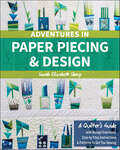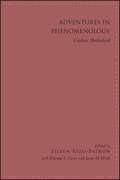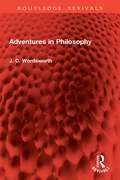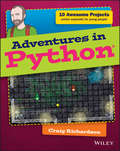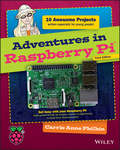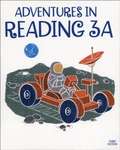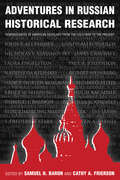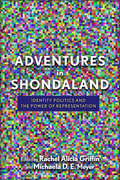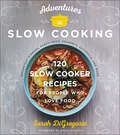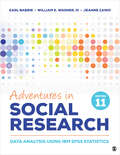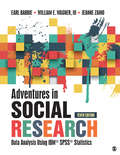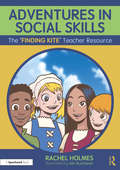- Table View
- List View
Adventures in Other Lands Speed and Comprehension Reader
by Matilda NordtvedtHelp boost your child’s reading speed and comprehension with Adventures in Other Lands. This book includes exciting reading exercises about children living in foreign countries such as Japan, Peru, Bolivia, and more. Each story lists the number of words in the selection and includes a removable quiz to test your child’s understanding of the passage. Complete with an Answer Key and a Reading Record Sheet, this reader allows you to evaluate and track your child’s progress as he advances in reading speed and comprehension.
Adventures in Paper Piecing & Design: A Quilter's Guide with Design Exercises, Step-by-Step Instructions & Patterns to Get You Sewing
by Sarah Elizabeth SharpTurn your interest in foundation paper-piecing into a full-blown love affair. Learn about every stage of the process—from piecing technique to pattern design—in this comprehensive guide. Start with the basics of sewing on paper, then explore the author’s open-ended design exercises to create your own patterns or follow along with the author’s take to sew her graphic interpretations of the prompts. With an annotated overview of the author’s favorite FPP methods, countless tips, and over thirty paper-pieced quilt blocks plus seven design exercises to put your skills to the test, you’ll have the tools you need to thrive when confronted with any paper-piecing challenge! - Build your piecing skills with over thirty graphic paper-pieced blocks inspired by everything from house plants to typography to surface pattern design techniques - Learn how to translate your own reference images or sketches into FPP patterns - Sharpen your pattern-design skills with choose-your-own-adventure style exercises "
Adventures in Parenthood
by Denise Van OutenIn her second parenting book, Denise van Outen recounts, with her trademark warmth and honest, down-to-earth attitude, the joys and challenges of motherhood following the birth of her daughter Betsy with Lee Mead. ADVENTURES IN PARENTHOOD tells the trials and tribulations of those first 18 months of parenthood, when everything is new. Denise believes it's important to be open and to share as a new mum - she has spoken out about breastfeeding and being a working mum in the press - and this book does exactly that. Denise draws not just on her own experience, but also those of her non-celebrity friends. Some of her Twitter followers have also added their own advice and experience. This frank and honest account from Denise is a great holiday read for any new parent who is wondering if anyone else is feeling the same way they are - the answer is usually yes!
Adventures in Parenthood
by Denise Van OutenIn her second parenting book, Denise van Outen recounts, with her trademark warmth and honest, down-to-earth attitude, the joys and challenges of motherhood following the birth of her daughter Betsy with Lee Mead. ADVENTURES IN PARENTHOOD tells the trials and tribulations of those first 18 months of parenthood, when everything is new. Denise believes it's important to be open and to share as a new mum - she has spoken out about breastfeeding and being a working mum in the press - and this book does exactly that. Denise draws not just on her own experience, but also those of her non-celebrity friends. Some of her Twitter followers have also added their own advice and experience. This frank and honest account from Denise is a great holiday read for any new parent who is wondering if anyone else is feeling the same way they are - the answer is usually yes!
Adventures in Phenomenology: Gaston Bachelard (SUNY series in Contemporary French Thought)
by Eileen Rizo-Patron; Edward S. Casey; Jason M. WirthLike Schelling before him and Deleuze and Guattari after him, Gaston Bachelard made major philosophical contributions to the advancement of science and the arts. In addition to being a mathematician and epistemologist whose influential work in the philosophy of science is still being absorbed, Bachelard was also one of the most innovative thinkers on poetic creativity and its ethical implications. His approaches to literature and the arts by way of elemental reverie awakened long-buried modes of thinking that have inspired literary critics, depth psychologists, poets, and artists alike. Bachelard's extraordinary body of work, unduly neglected by the English-language reception of continental philosophy in recent decades, exhibits a capacity to speak to the full complexity and wider reaches of human thinking. The essays in this volume analyze Bachelard as a phenomenological thinker and situate his thought within the Western tradition. Considering his work alongside that of Schelling, Husserl, Bergson, Buber, Heidegger, Merleau-Ponty, Gadamer, Deleuze, and Nancy, this collection highlights some of Bachelard's most provocative proposals on questions of ontology, hermeneutics, ethics, environmental politics, spirituality, and the possibilities they offer for productive transformations of self and world.
Adventures in Philosophy (Routledge Revivals)
by J. C. WordsworthFirst published in 1925, Adventures in Philosophy presents a series of essays dealing with some of the chief problems of metaphysics and beginning with a defence of that somewhat unpopular pursuit. The first part of the book is mainly constructive in character, and not only attempts to put as clearly as possible the metaphysical views of the author but indicates their consequences from an ethical standpoint. The later chapters discuss two of the most important developments in philosophy associated with the names of Einstein and Bergson. Finally, the author considers how far religion, especially the Christian religion, is affected by the conclusions reached earlier in the book. This is an important historical reference for students and scholars of philosophy.
Adventures in Prayer
by Sharon ConnorsPrayer has surged in popularity along with a huge widespread interest in spirituality. Yet in the midst of this, the most frequent questions concerning many who pray are: How should I pray? How does prayer really work? and How can prayer work for me? If we don't really know how to pray effectively, then the process could prove to be hit and miss – with results often being inconsistent. But as ordained minister Sharon Connors reveals, prayer is something that we can all do, and which has the potential to transform our lives – we just have to understand the basic principles and techniques that make it work. ADVENTURES IN PRAYER provides the key to successful prayer. It explains exactly how prayer works, offering a way for people to connect with a higher power, and to answer their deepest questions and needs. Sharon Connors has had extensive – and diverse – prayer experience throughout her ministry, and her approach to prayer is both non-denominational and non-religious, applicable to readers of all faiths and backgrounds who want to heighten their spiritual experience. With clear and simple guidelines, this book shows how we can use prayer successfully to achieve spiritual harmony and wellbeing in all aspects of our lives, including: making difficult decisions, handling change, healing, finding our true purpose, and bringing ourselves closer to the divine in our daily lives.
Adventures in Prayer: Praying Your Way to a God You Can Trust
by Sharon ConnorsThis book is about creating a better life through prayer. Sharon Connors tested the power of prayer over and over as she grew from a frightened, impoverished, but determined single mother of two children to a senior minister who has brought the gift of prayer to thousands. The people she works with ask basic questions like: How should I pray? What if I'm afraid of God or angry at God? How do I know prayer is working? Is it all right to pray for myself and for specific things I want? How can I build my faith? This step-by-step guide provides honest, practical answers--and the inspiration to act on them.Sharon Connors teaches prayer as a learnable technique that improves with daily practice. She interweaves basic principles with moving personal stories from her own life and those she has served, and offers dozens of original prayers and affirmations that address readers' most urgent needs. Building on the conviction that the human mind is a powerful creative force designed to communicate with God, she first shows how to focus the power of mind in prayer. In each chapter that follows, she describes how to use prayer in specific circumstances, including: Healing broken relationships Seeking guidance in times of confusion Transforming the fear of change and mastering life's storms Building prosperity Learning to forgive Finding your purpose in lifeThe final chapter, "Creating Miracles," teaches the "four ways of gratitude," which have the greatest power to turn around our lives.Reverend Connors has explored a wide range of prayer and healing approaches from many spiritual traditions, and these diverse practices are reflected in her book.From the Hardcover edition.
Adventures in Python
by Craig RichardsonThe complete beginner's guide to Python, for young people whowant to start today Adventures in Python is designed for 11-to 15-year oldswho want to teach themselves Python programming, but don't knowwhere to start. Even if you have no programming experience at all,this easy to follow format and clear, simple instruction will getyou up and running quickly. The book walks you through nineprojects that teach you the fundamentals of programming in general,and Python in particular, gradually building your skills until youhave the confidence and ability to tackle your own projects. Videoclips accompany each chapter to provide even more detailedexplanation of important concepts, so you feel supported every stepof the way.Python is one of the top programming languages worldwide, withan install base in the millions. It's a favourite language atGoogle, YouTube, the BBC, and Spotify, and is the primaryprogramming language for the Raspberry Pi. As an open-sourcelanguage, Python is freely downloadable, with extensive librariesreadily available, making it an ideal entry into programming forthe beginner. Adventures in Python helps you get started,giving you the foundation you need to follow your curiosity.Start learning Python at its most basic levelLearn where to acquire Python and how to set it upUnderstand Python syntax and interpretation for moduleprogrammingDevelop the skills that apply to any programming languagePython programming skills are invaluable, and developingproficiency gives you a head start in learning other languages likeC++, Objective-C, and Java. When learning feels like fun, you won'tever want to stop - so get started today with Adventuresin Python.
Adventures in Raspberry Pi (Adventures In ... Ser.)
by Carrie Anne PhilbinBuild cool Raspberry Pi projects with no experience required! Adventures in Raspberry Pi, 3rd Edition is the fun guide to learning programming. Starting from the very basics and building skill upon skill, you'll learn developing fundamentals—even if you've never programmed before. Learning is exciting when you're working your way through cool projects, but the concepts you learn and the skills you master will take you further than you ever thought possible. You'll learn how your Raspberry Pi 3 works and what it can do as you create stories and games, program shapes, code music, and even build Minecraft worlds with projects designed specifically for kids 11 to 15. Author Carrie Anne Philbin is a former high school teacher, and she showcases her skills with clear, easy to follow instructions and explanations every step of the way. If you're interested in programming but find other books hard to understand, this book is your ideal starting point for mastering the Raspberry Pi. Inexpensive, non-intimidating, yet surprisingly versatile, the Raspberry Pi 3 is an ideal way to learn programming. Updated to align with the newest board, this book will teach you fundamental programming skills while having a ton of fun! Get acquainted with your Raspberry Pi's bits and pieces Take control of your Pi's "insides" with simple commands Program games, code music, and build a jukebox Discover where your new skills can take you next The tiny, credit-card sized Raspberry Pi has become a huge hit among kids—and adults—interested in programming. It does everything your desktop can do, but with a few basic programming skills, you can make it do so much more. With simple instructions, fun projects, and solid skills, Adventures in Raspberry Pi is the ultimate kids' programming guide!
Adventures in Reading (Pegasus Edition)
by Fannie Safier Margaret Ferry Wanda SchindleyLiterature textbook.
Adventures in Reading 3A (Third Edition)
by Bju PressCarefully selected third-grade-leveled reading selections will help students improve their reading skills through progressively difficult texts. An element of the BJU Press Reading Grade 3 Curriculum, this is the first of two readers. Divided into two sections - - - "Actions & Attitudes" and "Missions and Memories" - - - each features multiple stories in different genres such as poetry, realistic fiction, biographies, and historical fiction. Feature pages include "think and discuss" and "look again" questions that highlight literary skills, comprehension questions, and vocabulary. Different artistic styles are used for the illustrations. 385 pages, softcover with glossary, 3rd Edition.
Adventures in Reading 3B (Third Edition)
by Kathleen Hynicka Amy Schoneweis Robin E. ScrogginsThe book contains developmentally appropriate selections from a variety of genres with a progression of difficulty in readability and skills to provide success for every student. New Bible retellings closely follow the text in Scripture.
Adventures in Reading 9: Heritage Edition, Revised
by Fannie SafierA collection of short stories, non-fiction, poetry, biographies and essays, along with exercises to encourage reading.
Adventures in Russian Historical Research: Reminiscences of American Scholars from the Cold War to the Present
by Samuel H. Baron Cathy FriersonAmerican historians of Russia have always been an intrepid lot. Their research trips were spent not in Cambridge or Paris, Rome or Berlin, but in Soviet dormitories with official monitors. They were seeking access to a historical record that was purposefully shrouded in secrecy, boxed up and locked away in closed archives. Their efforts, indeed their curiosity itself, sometimes raised suspicion at home as well as in a Soviet Union that did not want to be known even while it felt misunderstood. This lively volume brings together the reflections of twenty leading specialists on Russian history representing four generations. They relate their experiences as historians and researchers in Russia from the first academic exchanges in the 1950s through the Cold War years, detente, glasnost, and the first post-Soviet decade. Their often moving, acutely observed stories of Russian academic life record dramatic change both in the historical profession and in the society that they have devoted their careers to understanding.
Adventures in Senior Living: Learning How to Make Retirement Meaningful and Enjoyable
by Harold G Koenig J Lawrence DriskillIf retirement is approaching or you've recently retired, Adventures in Senior Living can help you prepare for the opportunities, needs, problems, and challenges that retirement often brings. Through 31 lively and interesting interviews, you learn how other people have found positive and rewarding ways to make their retirement years meaningful and enjoyable. Opening windows into their own lives, these inspiring retirees share with you a wide range of retirement ideas that pertain to volunteer work, travel, selecting your living arrangements, and getting involved in your community.Retirement doesn't have to bring feelings of boredom or restlessness. Adventures in Senior Living shows you that your retirement years can be your most fulfilling, productive, and fun years. You'll have more time to work in that garden you love, make quilts with your friends, spend time with your loved ones, and get exercise. But, possibly even more important than that, you'll have the ability to participate in your community on an entirely new level and to make a difference in other people's lives as well as your own. The life-loving, generous people who come together in this wonderful book are sure to inspire you as they speak about their accomplishments that include: recording books on tape for blind people conducting missionary work at home and abroad brightening the lives of patients in nursing homes and hospitals teaching Sunday school caring for a spouse with Alzheimer's delivering meals on wheels to shut-in people establishing a battered women's shelter rescuing prostitutes from the streetThis book presents retirees, teachers of courses in aging and retirement, activity directors at retirement and nursing homes, family members, and health and mental health care providers with many stories of extraordinary volunteerism, service, and kindness, but it also talks about the needs of retirees and their daily, more personal experiences. To this end, Adventures in Senior Living discusses the importance of continuing study, discussion, meditation, prayer, and fitness in the lives of seniors.
Adventures in Shondaland: Identity Politics and the Power of Representation
by Stephanie Young Vincent Pham Tina Harris Melissa Ames Mark P Orbe Michaela D.E. Meyer Rachel Alicia Griffin Richard G Jones Emily Vajjala Joan Faber McAlister Jessica L Furgerson Jennifer Billinson Jade Petermon Shadee Abdi Bernadette Calafell Myra Washington Mary Ingram-Waters Leslie Balderas Sean SwensonShonda Rhimes is one of the most powerful players in contemporary American network television. Beginning with her break-out hit series Grey’s Anatomy, she has successfully debuted Private Practice, Scandal, How to Get Away with Murder, The Catch, For The People, and Station 19. Rhimes’s work is attentive to identity politics, “post-” identity politics, power, and representation, addressing innumerable societal issues. Rhimes intentionally addresses these issues with diverse characters and story lines that center, for example, on interracial friendships and relationships, LGBTIQ relationships and parenting, the impact of disability on familial and work dynamics, and complex representations of womanhood. This volume serves as a means to theorize Rhimes’s contributions and influence by inspiring provocative conversations about television as a deeply politicized institution and exploring how Rhimes fits into the implications of twenty-first century television.
Adventures in Slow Cooking: 120 Slow Cooker Recipes for People Who Love Food
by Sarah DiGregorio“An exciting and refreshingly unbiased guide to slow cooking . . . even die-hard fans of these appliances will learn something new.” —Library Journal, starred reviewSarah DiGregorio, a James Beard nominated food writer, has reinvented slow cooking for a generation that cooks for fun and flavor, taking a fresh approach to reclaim this versatile tool without sacrificing quality or taste.Showcasing a beautiful, engaging design, inviting color photographs, and 105 original, innovative recipes thoroughly tested in a variety of brands of slow cookers, Adventures in Slow Cooking provides a repertoire of delicious food. Inside you’ll find ideas for flavorful sweet and savory slow cooker dishes, including:Whipped Feta, Red Pepper and Olive DipGranola with Pistachios, Coconut and CardamomSavory Overnight Oatmeal with Bacon, Scallions and CheddarTurkey-Spinach Meatballs Stuffed with MozzarellaSpicy Kimchi and Pork RamenOrange, Olive and Fennel Chicken TagineDaal with Mango and Mustard SeedsFarro Bowl with Smoked Salmon, Yogurt, and Everything-Bagel SpiceOxtail and Short Rib PhoCorn, Mushroom and Zucchini TamalesProper Red Sauce Eggplant ParmPeach-Orange Blossom JamMatcha-White Chocolate Pots de CrèmeCardamom-Molasses Apple Upside-Down CakeStar Anise-Black Pepper Hot ToddySarah also provides tips and tricks that will help cooks get the most out of today’s slow cookers. With a foreword by Grant Achatz, modernist chef and advocate of the slow cooker, Adventures in Slow Cooking makes this convenient appliance an indispensable tool for the modern kitchen.“DiGregorio has made the slow cooking downright sophisticated.” —Epicurious “Fun and useful. . . . DiGregorio uses a multistep approach to help build flavor in the slow cooker . . . a must-have for slow-cooker fans.” —Publishers Weekly
Adventures in Social Research: Data Analysis Using IBM SPSS Statistics
by Earl R. Babbie Jeanne S. Zaino William E. WagnerThis text provides a practical, hands-on introduction to data conceptualization, measurement, and association through active learning. Students get step-by-step instruction on data analysis using the latest version of SPSS and the most current General Social Survey data. The text starts with an introduction to computerized data analysis and the social research process, then walks users through univariate, bivariate, and multivariate analysis using SPSS. The book contains applications from across the social sciences—sociology, political science, social work, criminal justice, health—so it can be used in courses offered in any of these departments. The Eleventh Edition uses the latest general Social Survey (GSS) data, and the latest available version of SPSS. The GSS datasets now offer additional variables for more possibilities in the demonstrations and exercises within each chapter.
Adventures in Social Research: Data Analysis Using IBM SPSS Statistics
by Earl R. Babbie Jeanne S. Zaino William E. WagnerThis text provides a practical, hands-on introduction to data conceptualization, measurement, and association through active learning. Students get step-by-step instruction on data analysis using the latest version of SPSS and the most current General Social Survey data. The text starts with an introduction to computerized data analysis and the social research process, then walks users through univariate, bivariate, and multivariate analysis using SPSS. The book contains applications from across the social sciences—sociology, political science, social work, criminal justice, health—so it can be used in courses offered in any of these departments. The Eleventh Edition uses the latest general Social Survey (GSS) data, and the latest available version of SPSS. The GSS datasets now offer additional variables for more possibilities in the demonstrations and exercises within each chapter.
Adventures in Social Research: Data Analysis Using IBM® SPSS® Statistics
by Earl R. Babbie Dr William E. Wagner Jeanne S. ZainoWritten by esteemed social science research authors Earl R. Babbie, William E. Wagner, and Jeanne Zaino, Adventures in Social Research: Data Analysis Using IBM® SPSS® Statistics, Ninth Edition encourages students to practice SPSS as they read about it, providing a practical, hands-on introduction to conceptualization, measurement, and association through active learning. This fully revised workbook will guide students through step-by-step instruction on data analysis using the latest version of SPSS and the most up to date General Social Survey data. Arranged to parallel most introductory research methods texts, this text starts with an introduction to computerized data analysis and the social research process, then takes readers step-by-step through univariate, bivariate, and multivariate analysis using SPSS Statistics. In this revised edition, active and collaborative learning will be emphasized as students engage in a series of practical investigative exercises.
Adventures in Social Research: Data Analysis Using IBM® SPSS® Statistics
by Earl R. Babbie Dr William E. Wagner Jeanne S. ZainoWritten by esteemed social science research authors Earl R. Babbie, William E. Wagner, and Jeanne Zaino, Adventures in Social Research: Data Analysis Using IBM® SPSS® Statistics, Ninth Edition encourages students to practice SPSS as they read about it, providing a practical, hands-on introduction to conceptualization, measurement, and association through active learning. This fully revised workbook will guide students through step-by-step instruction on data analysis using the latest version of SPSS and the most up to date General Social Survey data. Arranged to parallel most introductory research methods texts, this text starts with an introduction to computerized data analysis and the social research process, then takes readers step-by-step through univariate, bivariate, and multivariate analysis using SPSS Statistics. In this revised edition, active and collaborative learning will be emphasized as students engage in a series of practical investigative exercises.
Adventures in Social Research: Data Analysis Using IBM® SPSS® Statistics
by Earl R. Babbie Dr William E. Wagner Jeanne S. ZainoInspire students to pursue their own adventures in social research with this practical, hands-on introduction to data conceptualization, measurement, and association through active learning. Adventures in Social Research: Data Analysis Using IBM® SPSS® Statistics from Earl Babbie, William E. Wagner, III, and Jeanne Zaino offers a practical, hands-on introduction to the logic of social science research for students in many disciplines. The fully revised Tenth Edition offers step-by-step instruction on data analysis using the latest version (24.0) of SPSS and current data from the General Social Survey. Organized to parallel most introductory research methods texts, this text starts with an introduction to computerized data analysis and the social research process, then takes readers step-by-step through univariate, bivariate, and multivariate analysis using SPSS Statistics. The range of topics, from beginning to advanced, make Adventures in Social Research appropriate for both undergraduate and graduate courses.
Adventures in Social Research: Data Analysis Using IBM® SPSS® Statistics
by Earl R. Babbie Dr William E. Wagner Jeanne S. ZainoInspire students to pursue their own adventures in social research with this practical, hands-on introduction to data conceptualization, measurement, and association through active learning. Adventures in Social Research: Data Analysis Using IBM® SPSS® Statistics from Earl Babbie, William E. Wagner, III, and Jeanne Zaino offers a practical, hands-on introduction to the logic of social science research for students in many disciplines. The fully revised Tenth Edition offers step-by-step instruction on data analysis using the latest version (24.0) of SPSS and current data from the General Social Survey. Organized to parallel most introductory research methods texts, this text starts with an introduction to computerized data analysis and the social research process, then takes readers step-by-step through univariate, bivariate, and multivariate analysis using SPSS Statistics. The range of topics, from beginning to advanced, make Adventures in Social Research appropriate for both undergraduate and graduate courses.
Adventures in Social Skills: The ‘Finding Kite’ Teacher Guide (Adventures in Social Skills)
by Rachel HolmesThis teacher resource is filled with worksheets, tasks and activities focused on developing the social skills of autistic children aged 8-12. It has been created to be used alongside the story Finding Kite: An Interactive Tudor Mystery, although activities can stand alone as a programme of intervention. Each task encourages young people to think about their own experiences, challenges and goals, building self-esteem and confidence along the way. Suitable for use in small groups or 1:1, the worksheets are flexible in design, allowing the facilitator to respond to the needs of each child. Key features of this resource include: Engaging activities divided into sections focused on ‘Making Sense of my World’ and ‘Connecting with Others’ Photocopiable and downloadable worksheets, filled with opportunities for reflection and discussion The option to use it alongside the engaging, choose your own adventure story, Finding Kite, which immerses the reader in a sensory adventure Designed for students aged 8-12, this resource provides an invaluable opportunity to build an understanding of the complexities of social dynamics. Although created with autistic girls in mind, it can be used with students of different genders and adapted for their needs.

